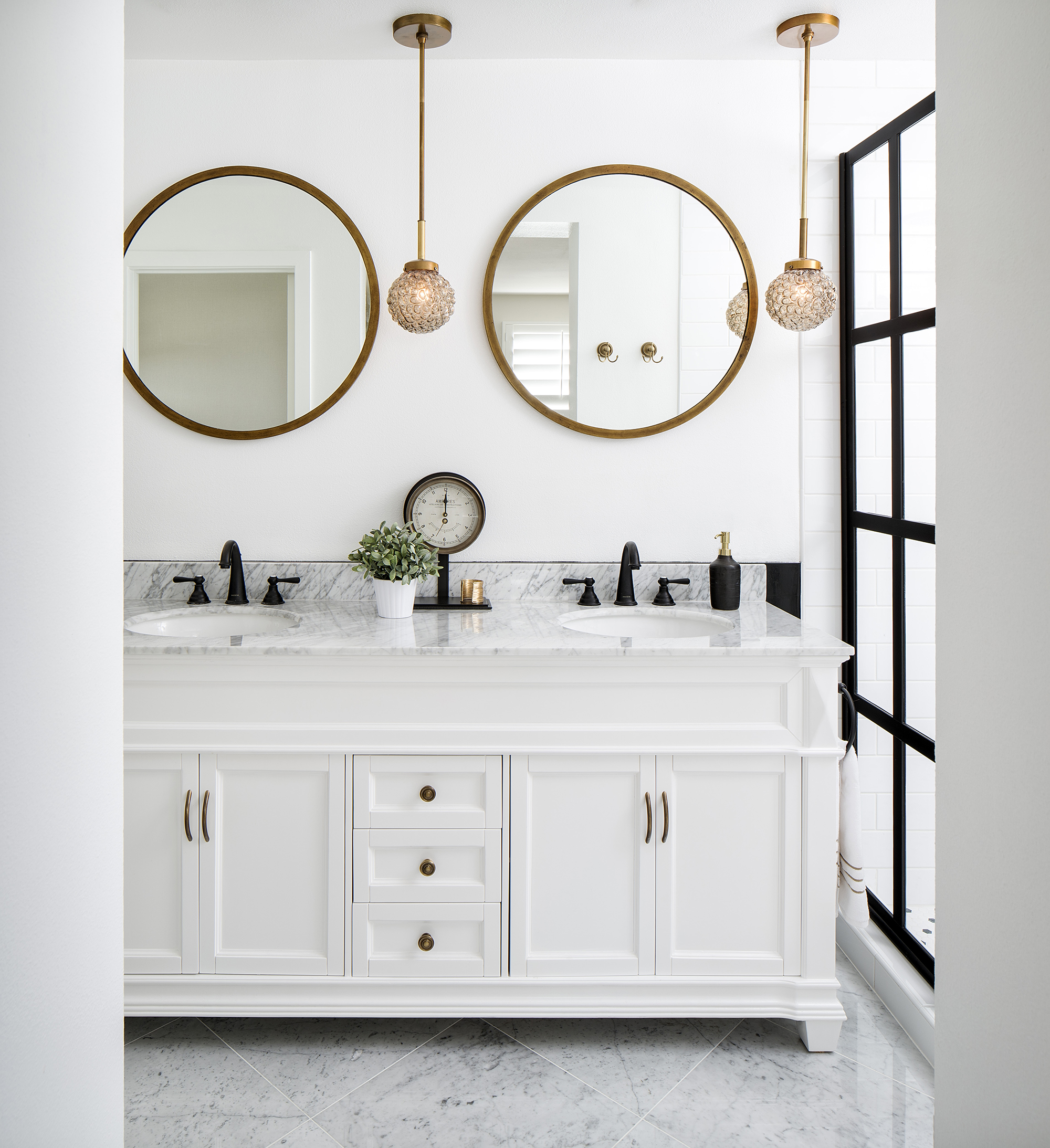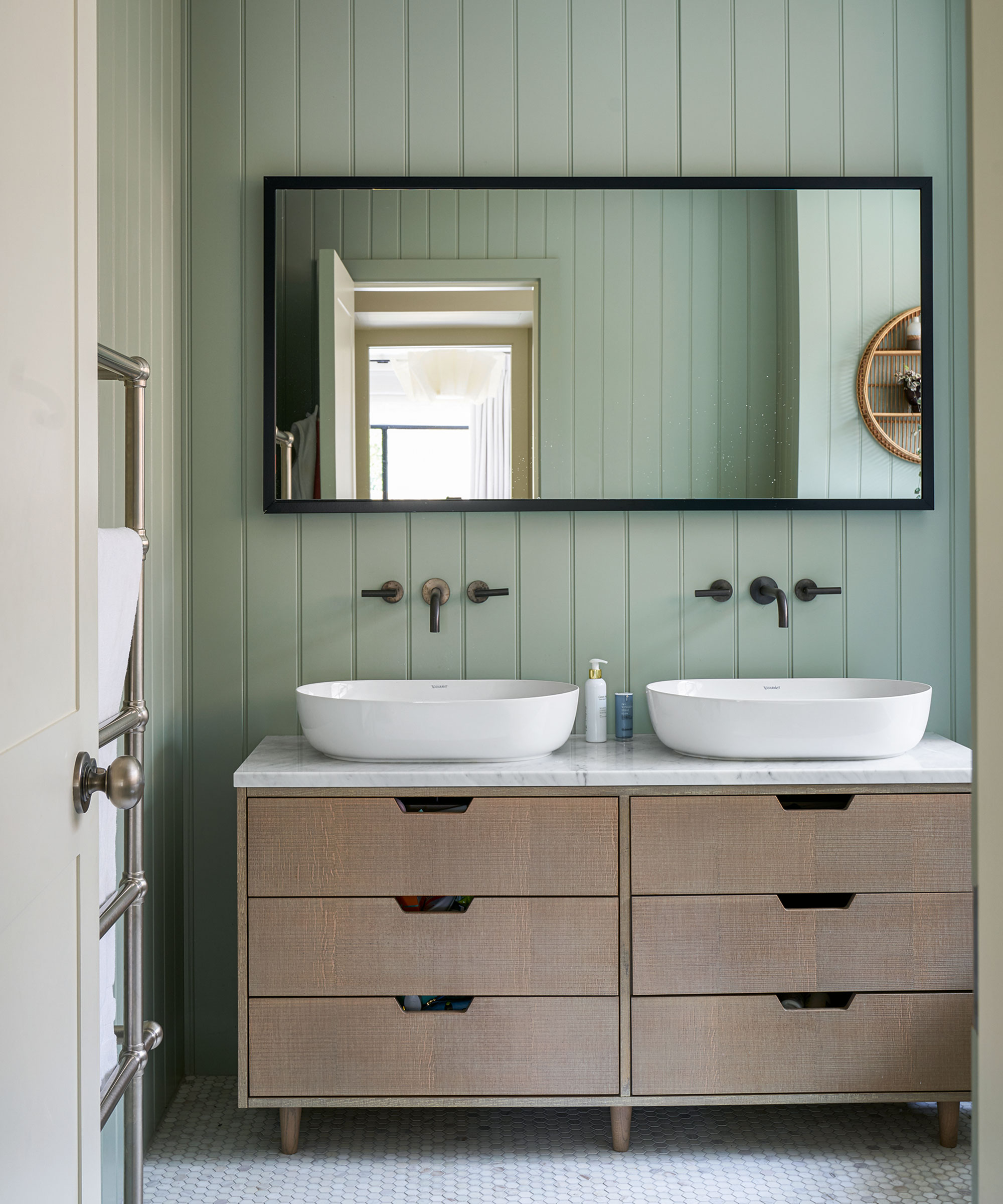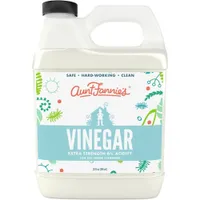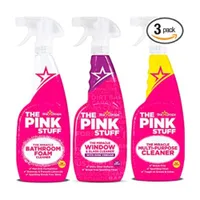How to clean a mirror without streaks – the techniques, tricks and products experts use
Banish those frustrating mirror streaks, for good

Megan Slack

A streaky mirror is not only impractical but can ruin the look of your room too. Learning how to clean a mirror without streaks is, therefore, essential for an overall polished-looking space.
While it may not seem like there is much to cleaning a mirror, using the wrong cleaning products, or cleaning a mirror too quickly can all put a dampener on your mirror's shine.
The good news? We have spoken to experts to steal some of their top cleaning tips and product recommendations for achieving a streak-free mirror every time.
Toolkit
Decorating with mirrors? You definitely need to know how to keep them streak-free. These are the key essentials.
- Lint Free Microfiber cloths, such as these cloths from Amazon to prevent small fibers from muddying your mirror.
- Distilled water (yes it really is that simple!).
- White vinegar (such as this cleaning vinegar on Amazon) for a chemical-free clean.
- Glass and mirror cleaner, such as The Pink Stuff Window & Glass Cleaner on Amazon.
1. Use vinegar

Overly sudsy cleaners are one of the main causes of streaks on mirrors, with murky residue leaving your mirror looking dirtier than before. So, it's no surprise that even when cleaning a bathroom, harsher, more traditional chemicals and commercial cleaners are being left behind in favor of naturally sourced products or home goods like vinegar.
'Use cleaning products that do not contain soaps and scents as these additives leave behind the residues that cause streaks,' Paige Anderson, a cleaning expert at Nitido Design explains.
'Mixing 50:50 vinegar and water in a bottle will help get rid of the streaks when cleaning your mirror,' explains Alicia Sokolowski, eco-cleaning expert, and co-CEO of AspenClean.
Design expertise in your inbox – from inspiring decorating ideas and beautiful celebrity homes to practical gardening advice and shopping round-ups.
6% Distilled White Cleaning Vinegar | $11.99 at Amazon
This specially formulated white vinegar with cleaning strength at 6% acidity lifts grime and breaks down grease, mineral deposits, limescale, and built-up film for a clean space with no residue left behind and no rinsing required.
2. Use distilled water

If your mirror needs a simple refresh and not a deep clean, then opting for plain, distilled water (water boiled and cooled down again) can remove minor marks with ease. Just remember to dry away any droplets afterward.
'Not only is it cost-effective because you don't have to purchase window cleaner, but it's safer for your family and pets,' says Michelle Hansen, a cleaning and organizing expert and owner of Practical Perfection.
Simply wipe away any dust from the mirror with a dry cloth, add water to a spray bottle, such as this product from Amazon, spray across the mirrored surface, and wipe away with one microfiber cloth before buffing dry with a second one right away to prevent water marks.
3. Choose the right cloth

'Bathroom mirrors can gather a lot of dirt over time and one of the main issues when cleaning a mirror is the streaks and residue from the cloth that are left behind,' says Alicia.
'Some materials also tend to leave threads behind, which is why we suggest using a microfiber cloth,' Alicia adds. 'They leave no residue and they last forever!'
Amazon's multi-pack of micro fiber cloths has been voted the best buy in the H&G office – they are washable and the pack can last at least five years.
4. Use glass cleaner

If you find that completely natural cleaners are not quite cutting it, then opting for an eco-friendly commercial glass cleaner such as The Pink Stuff's Multi-Purpose Spray on Amazon can help to shift stubborn marks like soap scum or dried toothpaste on bathroom mirrors.
'Instead of scrubbing hard, apply glass cleaners to those areas where the spots are and wipe them gently with a cloth,' Paige Anderson, of Nitido Design advises.
You can buy a range of glass cleaners for your mirrors on Amazon.
The Pink Stuff Window & Glass Cleaner - $19.99 for three on Amazon
Our Miracle Window Cleaner Removes Grease And Grime From Windows, Mirrors And Other Glass Surfaces.
5. Wipe from side to side

Paige Anderson suggests your cloth pattern is equally as important as your tools in keeping the spots away. Her secret to success? A side-to-side or zig-zag cleaning pattern instead of a circular motion.
This helps bypass static electricity, which can often be created while performing circular motions, and prevents small fibers, dust, and threads from clinging to the mirror after cleaning – achieving a spotless streak-free shine.
What is the best thing to clean mirrors with?
The best tool for cleaning a mirror is a microfiber cloth – as it ensures that your glass is fully dry and lint-free when you’re cleaning a living room or polishing mirrors elsewhere in your home.
Michelle Hansen uses microfiber cleaning rags, such as these buff glass rags from Amazon, and suggests that she has never seen better results in her home. 'Simply get the microfiber rag wet and squeeze out the excess water into the sink. Wipe the mirror with the microfiber cloth first, then use the other cloth to wipe it dry. [It's] super simple and easy,' the expert adds.
FAQs
Why is my mirror always cloudy?
If you mirror is always cloudy, even after cleaning with the right products, it may be that there is a build up of residue from past cleans that needs removing first. Use vinegar to help shift old marks and streaks – keeping in mind that it may take a few cleans to help free your mirrors shine once again.
If this does not work, it may be that your mirror is simply old and the backing has been worn away from years of cleaning with harsh solvents or contaminants. In this case, your mirror may need replacing entirely.
Does Dawn dish soap clean mirrors?
While Dawn dish soap can be used to clean mirrors, it is best to rinse the mirror with plain water afterwards to remove suds and prevent soap scum from marking the mirror afterwards. It is better to use a dedicated mirror cleaner if you have tough marks that are not shifting with plain water alone to prevent a streaky mirror.
Do paper towels scratch mirrors?
While paper towels and tissues may seem soft, they have a raw, unrefined surface that attracts dust, creating a rough, abrasive surface that can encourage small scratches on your glass – so avoid using them for cleaning your mirrors.
Can you clean mirrors with newspaper?
If you want to use a paper-based product over a microfiber cloth, home expert Cathy Abraham recommends using newspaper.
‘One of the best methods to clean a mirror is using just water and newspaper,’ she says. ‘Newspapers have high absorbency. So, it absorbs any dirt and water without pushing it around. As a result, you won't find any water streaks in the mirror. Take care to avoid glossy newspapers and stick to black and white prints to prevent any mess.’
To follow this method, you simply spray some water or glass cleaner on a folded newspaper and wipe the mirror thoroughly.
Professional cleaner Paige Anderson also discourages using old t-shirts or old rags as they are not created with cleaning in mind and will almost certainly leave a residue.
Why do my mirrors streak when I clean them?
Experts suggest that streaks are primarily caused by the wrong tools. If you're using products with soaps and additives (that are less able to evaporate) or you're wiping with a crude edge (such as those on paper towels) then you're less likely to achieve a spotless finish.

Chiana has been at Homes & Gardens for two years and is our resident 'queen' of non-toxic living. She spends most of her time producing content for the Solved section of the website, helping readers get the most out of their homes through clever decluttering, cleaning, and tidying tips. She was named one of Fixr's top home improvement journalists in 2024.
- Megan SlackHead of Celebrity Style News

